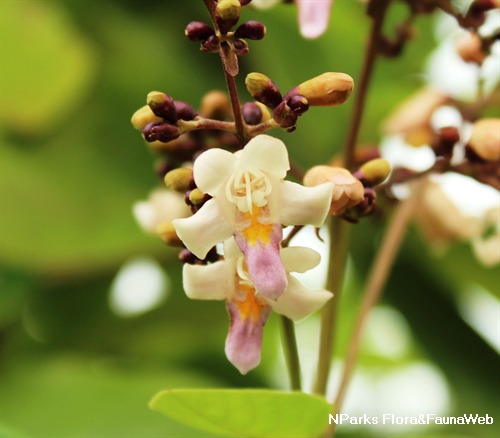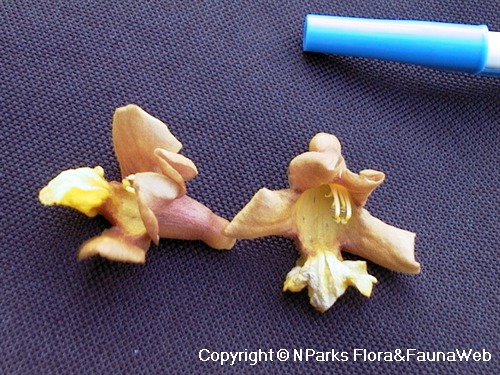
Back
Gmelina arborea Roxb. ex Sm.
| Family Name: | Lamiaceae (Labiatae) |
| Synonyms: | Gmelina rheedei Hook., Gmelina arborea var. canescens Haines, Gmelina arborea f. dentata Moldenke, Gmelina arborea var. glaucescens C.B.Clarke, Gmelina oblongifolia Roxb., Gmelina sinuata Link, Premna arborea Roth |
| Common Name: | Gamhar, Beechwood, Kashmir Tree, White Teak, Vemane |
Name
Classifications and Characteristics
| Plant Growth Form | Tree |
|---|---|
| Mode of Nutrition | Autotrophic |
Biogeography
| Native Distribution | Bangladesh, India, China, Cambodia, Japan, Laos, Myanmar, Thailand, Vietnam |
|---|---|
| Native Habitat | Terrestrial |
| Preferred Climate Zone | Tropical |
Description and Ethnobotany
| Growth Form | Large tree, able to grow up to about 30 m tall in its natural habitat. |
|---|---|
| Crown | Crown is wide-spreading and forms a shady crown. |
| Trunk | Girth size can reach up to 4.5 m, bark is smooth and pale grey to white or reddish-brown, surface lenticellate. |
| Foliage | Green broadly ovate leaves, opposite-decussate arrangement, measuring about 10 - 25 cm long and 7 - 20 cm wide, petiole about 5 - 15 cm long, leaves on young plants tend to be strongly lobed, 2 large glands at the base of each leaf. |
| Flowers | Yellowish-brown 5-lobed flowers, usually 1 - 3, borne on axillary and terminal panicle inflorescence, each flower is about 2.5 - 5 cm wide, lower lobe is yellow and about 2 times as long as the rest of the lobes. |
| Fruit | Fruit is a yellow drupe about 10 - 25 mm wide, contains 1 - 3 seeds. |
| Habitat | Can be found in tropical semi-evergreen, sub-montane, deciduous, sal and dry teak forests. |
| Etymology | Genus Gmelina is named after Johann Georg Gmelin (1709 - 1755), a German professor of botany of Tubingen University. Species arborea means tree-liked and branched. |
| Ethnobotanical Uses | Edible Plant Parts : Edible Fruits Medicinal: The fruit and bark can be used for treatment for bilious fever. Timber & Products: Wood is used for firewood and production of good quality pulp. Agriculture - Forestry: Leaves are used as fodder for cattle. |
Landscaping Features
| Desirable Plant Features | Ornamental Flowers, Fragrant |
|---|---|
| Landscape Uses | Parks & Gardens |
Plant Care and Propagation
| Light Preference | Full Sun |
|---|---|
| Water Preference | Moderate Water |
| Plant Growth Rate | Moderate |
| Rootzone Tolerance | Moist Soils, Well-Drained Soils |
| Propagation Method | Seed |
Foliar
| Mature Foliage Colour(s) | Green |
|---|---|
| Foliar Attachment to Stem | Petiolate |
Floral (Angiosperm)
| Flower Colour(s) | Yellow / Golden, Brown |
|---|---|
| Flower Grouping | Cluster / Inflorescence |
| Flower Location | Axillary, Terminal |
Fruit, Seed and Spore
| Mature Fruit Colour(s) | Yellow / Golden |
|---|
Image Repository
Others
| Master ID | 1646 |
|---|---|
| Species ID | 2939 |
| Flora Disclaimer | The information in this website has been compiled from reliable sources, such as reference works on medicinal plants. It is not a substitute for medical advice or treatment and NParks does not purport to provide any medical advice. Readers should always consult his/her physician before using or consuming a plant for medicinal purposes. |

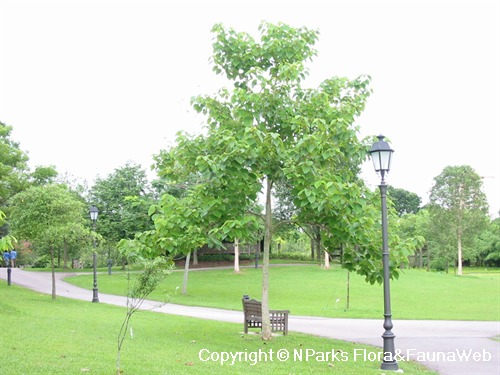
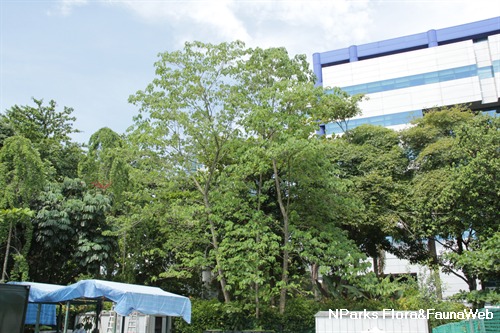
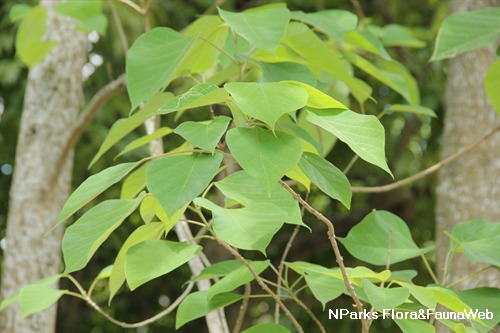
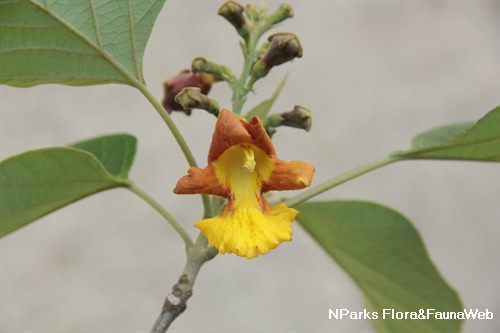
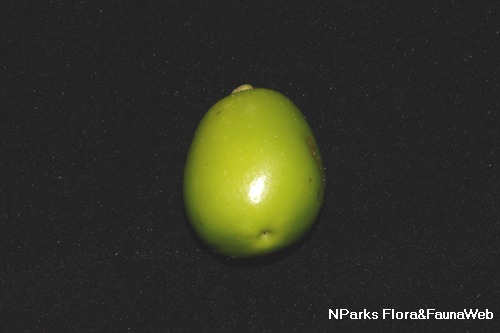
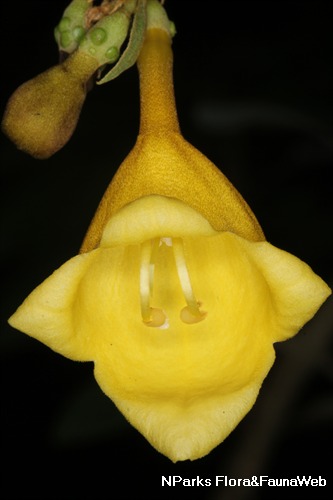
_lowres.jpg)
_lowres.jpg)
